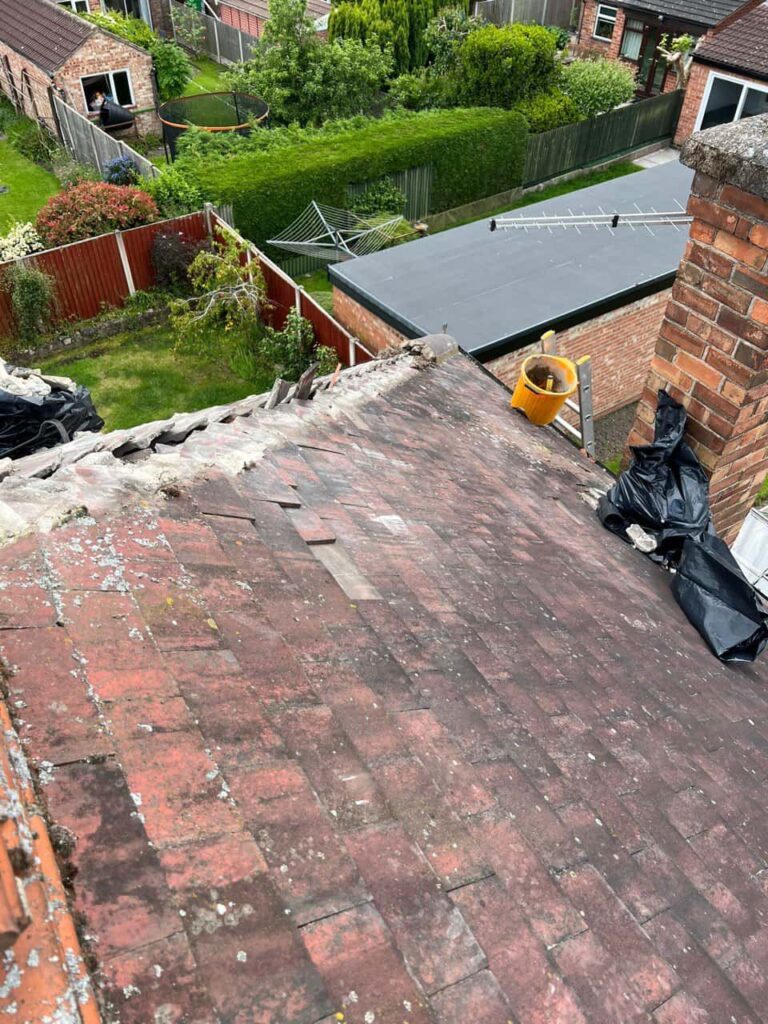Felt roofing is a popular choice for many flat and low-slope roofs due to its affordability, ease of installation, and durability. However, like any roofing material, felt roofs are not immune to problems, particularly as they age. Early detection and prompt action are crucial to prevent minor issues from escalating into significant, costly repairs. At Southsea Roofing Repairs, we want to help you keep your felt roof in top condition. Here’s how to spot and solve felt roof problems early in Southsea, Hampshire.
Common Signs of Felt Roof Failures
Felt roofs are generally robust, but over time they can develop issues that require attention. Here are some common signs that your felt roof may be failing:
- Blistering or Bubbling
- What to Look For: Blistering or bubbling on the surface of the felt is a common sign of trapped moisture or air beneath the roofing material. These blisters can lead to cracks or punctures if left untreated.
- Solution: Blistering typically requires professional attention. A roofer can carefully remove the affected area, allowing the trapped moisture or air to escape, before repairing the felt to restore its integrity.
- Cracking and Splitting
- What to Look For: Over time, exposure to the sun’s UV rays and fluctuating temperatures can cause felt to become brittle, leading to cracks and splits. These openings allow water to penetrate, leading to leaks.
- Solution: Small cracks and splits can often be repaired with roofing sealant, but more extensive damage may require replacing the affected section of the felt. A professional roofer can assess the extent of the damage and recommend the best course of action.
- Ponding Water
- What to Look For: Flat roofs are prone to ponding water—areas where water collects and doesn’t drain away. Prolonged ponding can weaken the felt and eventually lead to leaks.
- Solution: Improving the roof’s drainage system is essential to prevent ponding. This may involve adjusting the roof’s slope, adding drainage outlets, or installing a tapered insulation system. Regularly clearing debris from the roof and gutters also helps ensure proper drainage.
- Loose or Lifted Felt
- What to Look For: Felt that has become loose or lifted, particularly at the edges or around roof penetrations (like chimneys or vents), can allow water to seep under the roofing material, causing leaks and further damage.
- Solution: If the felt is still in good condition, it may be possible to secure it back in place with adhesive or roofing nails. If the felt is damaged or worn, it may need to be replaced entirely to ensure a watertight seal.
- Visible Leaks Inside the Building
- What to Look For: Water stains, damp patches, or drips inside the building are clear signs that your felt roof has failed. These issues often indicate a significant problem that requires immediate attention.
- Solution: Identify the source of the leak by inspecting the roof’s surface for obvious damage. A professional roofer can then repair the damaged area or, in severe cases, recommend replacing the roof.
Preventative Measures for Felt Roof Longevity
Prevention is always better than cure, especially when it comes to roofing. Here are some tips to help you maintain your felt roof and avoid common failures:
- Regular Inspections
- Conduct regular roof inspections, especially after extreme weather conditions. Look for signs of wear, damage, or any of the issues mentioned above. Early detection is key to preventing small problems from becoming major repairs.
- Maintain Proper Drainage
- Ensure that your roof’s drainage system is functioning correctly. Regularly clean gutters and downspouts to prevent blockages, and consider installing additional drainage solutions if ponding water is a recurrent issue.
- Timely Repairs
- Address any issues as soon as they are detected. Even small repairs, if done promptly, can prevent more significant problems down the line. Ignoring minor issues can lead to costly repairs or even the need for a full roof replacement.
- Professional Maintenance
- Schedule regular maintenance with a professional roofing service. A professional can identify and fix problems that may not be visible to the untrained eye, ensuring your roof remains in good condition for as long as possible.
Why Choose Southsea Roofing Repairs?
At Southsea Roofing Repairs, we specialise in maintaining and repairing felt roofs, ensuring they provide reliable protection for your property. Here’s why our services stand out:
- Experienced Professionals: Our team has extensive experience in identifying and repairing felt roof issues. We use the latest techniques and materials to provide durable, long-lasting repairs.
- Comprehensive Service: We offer a full range of services, from minor repairs to complete roof replacements. Whatever your roofing needs, we have the expertise to help.
- Customer Satisfaction: We pride ourselves on delivering high-quality work and excellent customer service. Your satisfaction is our priority.
Conclusion
Felt roof failures can lead to significant damage if not addressed promptly. By regularly inspecting your roof, maintaining proper drainage, and addressing issues as soon as they arise, you can extend the life of your felt roof and protect your property. At Southsea Roofing Repairs, we’re here to help you spot and solve felt roof problems early, ensuring your roof remains in top condition.
If you’ve noticed any signs of felt roof failure, or if it’s been a while since your last roof inspection, contact Southsea Roofing Repairs today. Let our expert team provide the professional care your roof needs to keep your home safe and dry.
Call us on: 023 8235 9773
Click here to find out more about Southsea Roofing Repairs
Click here to complete our contact form and see how we can help with your roof.

